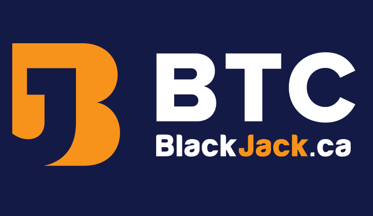Setting Up a Crypto Wallet for Bitcoin – It’s Easier Than You Think!
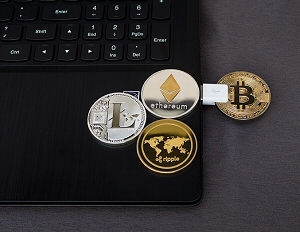
Ten years ago, cryptographic currency was a mysterious thing. Most people didn’t know about it. Most of those who did, didn’t trust it; or at least, didn’t trust that it would still be around ten years later. Not only is it still here, it’s now a part of daily life.
Most of us are at least aware of digital tokens like Bitcoin, if not active investors in the crypto market. You may find it surprising that that, to get from point A – state of awareness – to point B – owning crypto – all you really need is a way to store it. That’s where crypto wallets come in.
There are a lot of choices out there. Between types of wallets and private key maintenance, the more you know, the better decisions you can make for your individual circumstances. We’ll start with the most basic question of all.
What Is a Crypto Wallet?
A crypto wallet is simply a place to store your Bitcoins and altcoins. It’s hardly any different from putting cash money in a physical wallet, except that it’s virtual.
Think of a crypto wallet as an online bank account for digital currency. You can send tokens to and from the wallet, just as you would send money to and from your bank. The only difference is that you can’t physically hold crypto currency; not the way you can fiat money. It’s this very fact that scared so many away from crypto a decade ago. Now, as the world advances further and further into the digital age, it’s hard to deny that Bitcoin and altcoins are going to be a big part of it.
The good news is that, as the crypto market grows, it’s becoming easier to access. In the early days of Bitcoin, the instructions for getting a crypto wallet were tedious and confusing, to say the least. Now, it’s a simple five-step process that starts with choosing what type of wallet to store your coins in: Handheld Hardware, Desktop Software, or Mobile App.
What Type of Wallet Do I Need?
The type of crypto wallet you need will be determined by what you intend to do with your crypto. We’ll take a look at the three options to give you a better idea of their respective benefits.
Hardware Crypto Wallet
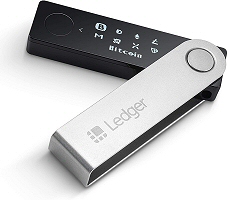
If you’re looking to purchase a large sum of crypto, and/or want to invest in crypto currencies for the long term, a hardware wallet is a good option. A hardware wallet is like a fancy flash drive. Think of it as a physical wallet you can carry around with you. You can insert the drive into a computer or Bitcoin ATM to open the wallet and access its contents.
The main benefit of a hardware wallet is that it’s in your physical possession. There is no constant connection to the internet. No one can hack it, track it, or steal your coins from it. So long as you keep your passphrase safe, the coins in it remain safe too.
The downside is that – just like a real wallet – if you lose it, it’s gone. It’s your job to protect and safeguard the wallet. Then again, there are some cold storage (hardware) wallets, like the Ledger Nano S, that allow you to recover your lost crypto by simply purchasing a new one and logging into it with the same passphrase; (hence the importance of protecting that passphrase!)
Long story short, hardware wallets are good for storing large sums of crypto, especially if you don’t intend to move them around a lot. If you’re investing that heavily into it, though, you should also invest heavily into a top of the line wallet, and a crush-proof case to store it in.
Desktop Software Wallet
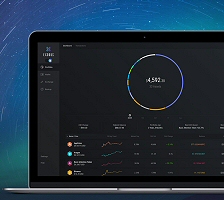
If you use a desktop computer regularly, you may wish to get a desktop crypto wallet. A desktop wallet is a software pack. You download the pack directly to your desktop computer. After installation, you can use the program to access your crypto and set up transactions with ease.
A software wallet can be used offline, keeping its contents safe from threat of malware, viruses, or general hacking issues. Security is enhanced by private encryption keys that are stored locally, as opposed to a third-party server. So long as you don’t lose the key or give it out to anyone else, your wallet, and everything in it, will remain safe.
The benefits of a desktop wallet is that it’s safer, less susceptible to hackers than a mobile wallet, and more convenient for transacting than a hardware wallet. However, once you connect it to the internet, it’s no longer 100% protected, and it’s still not as convenient for on-the-go traders as a mobile wallet.
Mobile App Wallet
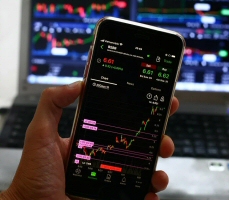
If you’re going to be moving crypto with any regularity, perhaps as a day-trading investor, you need to be able to access your digital tokens anytime, anywhere. Mobile wallets are the perfect choice for such users. They are mobile apps, and like any mobile app, are accessible at the tap of a finger. They are the most functional of all wallet options, and best for anyone who plans on spending crypto (not just buying and storing it).
On the downside, mobile wallets can be most susceptible to security breach by hackers, as well as viruses and malware. It really pays off to shop around when choosing one. The additional security of a QR code is crucial to protecting your wallet and its contents. Plus, like a real cash wallet or hardware wallet, if you lose your phone, your wallet may be with it.
Custodial Wallets vs. Non-Custodial Wallets
Before we move on, I’d like to talk a bit about Custodial and Non-Custodial Wallets. A custodial wallet is one that is maintained by a third-party, whereas a non-custodial wallet is one you take care of yourself. Crypto exchanges like Binance, Coinbase and Kraken offer custodial wallets.
Custodial Wallets
When you purchase crypto on their exchanges, they store it in a custodial wallet; that is, one they maintain on their servers. The contents are yours, but the wallet is not. That means the custodian of the wallet (the exchange service) is responsible for its security, as well as the private keys necessary to access it.
There’s nothing wrong with trusting your crypto to a custodial wallet, so long as the custodian is trustworthy. Binance, Coinbase and Kraken are all respectable companies, operating under strict regulation. Regulation means centralization (i.e. it’s not private), but it also means a great deal of insurance to cover your losses should anything go wrong. So you’re giving up anonymity for greater peace of mind.
Non-Custodial Wallets
A non-custodial wallet means your private keys are yours to keep safe. That’s good, because you don’t have to worry about trusting your crypto with the wrong people, or perhaps a company that turned out to be less reputable than you thought. However, it also means that, if you lose your passphrase, your wallet and crypto could be gone for good.
Which is better? Again, I’ll refer to the analogy of a crypto wallet being like a bank. Think about it like real cash. If you keep fiat money in a bank (custodial), it’s not going anywhere. Even if a hacker steals your debit card info and spends it all, banks are insured. So long as you can prove your identity, you get your money back.
On the other hand, if you keep your money in cash form in a shoe box in the back of your closet (non-custodial) and your house catches fire, you can kiss your life savings goodbye. The non-custodial route has its qualities, so long as you’re diligent in avoiding metaphorical house fires.
Setting Up a Wallet for Bitcoin and Other Crypto
Once you’ve chosen what type of wallet best suits your needs, you can go out and purchase one, or download one to your desktop or mobile device. The set up process will, of course, vary by which type you’ve chosen.
Hard Wallet Setup
The set up process for a hardware wallet is the most involved, but so long as you purchase one from a reputable developer like Ledger or Trezor, you’ll have the privilege of easy-to-understand, step-by-step instructions included with your wallet. Follow the directions and you’ll have your wallet set up in a few minutes.
Most importantly, keep your private key private. Put it in a safe place where it can’t be lost, stolen, or forgotten. Do not take the easy route and store your private key on a computer or mobile device, thereby defeating the purpose of paying for a safer, cold storage wallet.
Installing a Desktop Wallet
Desktop wallets come in the form of a computer software download. Once you’ve chosen the right wallet for you, and downloaded the software pack, “Open” or “Run” the file to start the installation. From here, it’s a quick process. Simply follow the on-screen instructions.
During installation, you’ll probably be asked to create a back-up of the passphrase that secures your private keys. Again, follow the on-screen instructions to do so. This is a critical step in securing your desktop wallet. I strongly recommend creating a new back-up on a regular basis.
Initializing a New Mobile Wallet App
The easiest of all wallets to set up is the mobile wallet. Simply visit the app store for your mobile device and look for crypto wallets. Choose the one that best suits your needs, and tap the Install button. The rest pretty much takes care of itself.
The only thing you need to do during the set up process is record the recovery passphrase on paper and put it in a secure place for safe keeping. If your wallet app doesn’t recommend that you do this, consider it an oversight by the app’ developers and do it anyway. The passphrase is the only way you’ll be able to recover your wallet and its contents should your phone be lost, stolen, or stop working.
Best Crypto Wallets for Bitcoin, Ether, and More
There are lots of different wallets, made to store lots of different coins. But there is no single wallet capable of storing every type of coin. Before you make your final decision, be sure to take into account the type of crypto coins you intend to store in that wallet. They are not all created equally. There are basically two types.
Single-Coin Wallets: These are wallets that only store one type of coin. They are generally developed and distributed by the maker of that particular coin, such as Dogecoin.org’s Doge Wallet. With more than a thousand different cryptos on the market today (and growing faster than a field of weeds in the rainy season), these wallets are becoming more and more rare.
Multi-Coin Wallets: These wallets were built to store a range of crypto currencies. Some will only hold crypto of the same general make-up. For instance, an Ethereum-based wallet will be able to hold any token built on the same ETH and ERC20 protocol (i.e. not Bitcoin). Others are built to hold hundreds of different cryptos, with regular updates to increase capacity as the market grows.
Long story short, make sure to get a wallet that is suitable for the coins you wish to store. That being said, here are some of today’s top-rated crypto wallets, and the types of coins they hold.
Top Altcoin and Bitcoin Wallets Today
We’ve already talked about all the different types of wallets to choose from. Therefore, I’ve chosen to categorize this list by the experience level of crypto users, rather than types of wallets.
Best Crypto Wallets for New Users – Binance Wallet
This category goes to custodial exchange wallets like Binance. The Binance Wallet is so much more than a wallet, and it takes the weight of responsibility off the user’s shoulders. You can choose a desktop or mobile wallet, link to a bank account or debit card, and start trading over 1,300 crypto, all in a matter of minutes. Likewise, the custodial wallet is capable of holding over 1,300 crypto; anything and everything offered on its trading platform.
Top Crypto Wallet for High Security – Trezor Model T
If you’re buying a large amount, or for long term investment purposes, cold storage hardware wallets are the obvious choice. The Trezor Model T is a top of the line wallet, capable of storing 1,600+ digital currencies. It will run you upwards of $200, but if ‘Fort Knox security‘ is the goal, this is your best option.
Security + Accessibility in a Crypto Wallet – Ledger Nano X
If you want top-notch security in a crypto wallet that’s more convenient and accessible, the Ledger Nano X is your best friend. It’s a hardware wallet, so you can rest assured your crypto is as safe as you keep your private key, but it’s also more functional. The Ledger Nano X has an LED screen for monitoring your assets, plus you can connect it to any desktop or mobile device via USB cable for instant access to your digital tokens. It’s also incredibly versatile, holding 1,800+ types of crypto.
#1 Desktop Crypto Wallet – Exodus
For the best in desktop software, the Exodus Desktop Wallet gets an A+. It’s optimized for all computers – PC, Mac and Linux – with a companion app for iOS and Android mobile devices. Exodus is non-custodial, meaning only you can access your assets with the 12-key passphrase. It’s only capable of holding about 130 different crypto, but caters to all the major tokens (BTC, BCH, DOGE, ETH, LTC, etc.)
#1 Mobile Crypto Wallet – Mycelium
If you’re a mobile-only user, the Mycelium Wallet is as good as it gets. There’s no desktop version to switch between, but it’s got a lot of features for on-the-go crypto traders. You can buy and sell directly in the app with fiat or crypto currency, and it’s non-custodial, so only you will have access to the private key. Only the major cryptos are supported, including all Bitcoin, Bitcoin forks, and Ethereum (ETH ERC-20) tokens).
